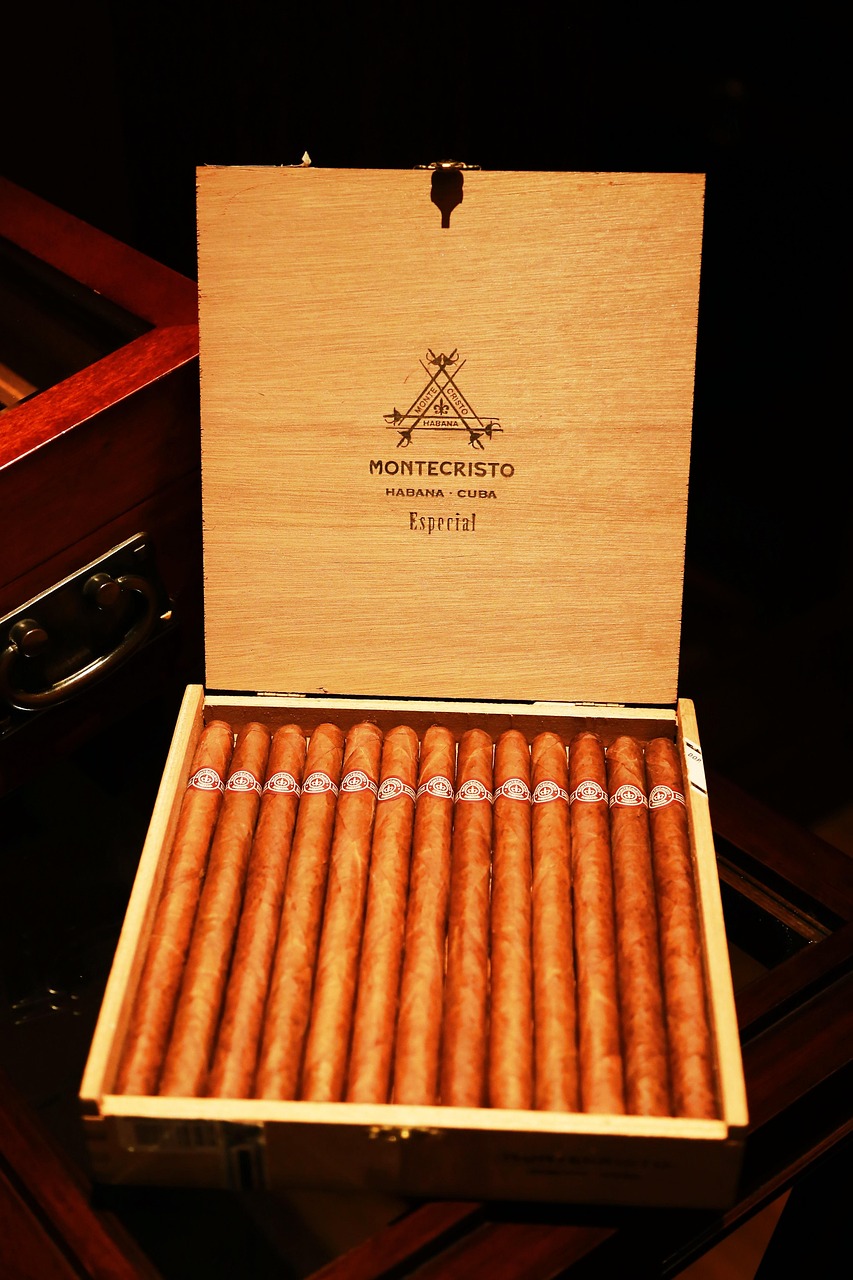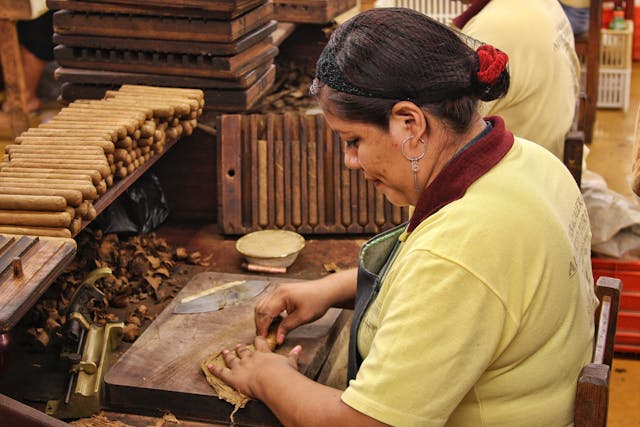The internet has been such an asset to the cigar world. It allows us to look up obscure brands, communicate with fellow fans across the globe, and access a greater amount of information than ever before. There’s a downside, though: rumors catch on like wildfire, and once they’re out there, they’re nearly impossible to get rid of.
Visit any cigar lounge or read online forums, and you’ll find the same tired myths that have been making the rounds for decades. While a few are harmless pieces of folklore, others are robbing you of your hard-earned cash, ruining your smoking experience, or just flat-out lying to you about health hazards.
Let’s burn down those stubborn misconceptions once and for all.
Myth #1: Darker (Maduro) cigars are always more powerful

This one is everywhere. The reasoning appears to make sense: a darker wrapper means stronger tobacco, right? I mean, dark coffee is stronger than light coffee.
Except that cigars are not coffee beans.
Fact: Color has very little to do with strength. A Maduro wrapper darkens through increased fermentation or the use of upper-priming leaves, yet the process tends to make the wrapper sweeter and less potent, not stronger. The strength comes from the filler tobaccos within—the 80% of your cigar that constitutes the blend.
You could smoke a light Connecticut wrapper that’ll knock you flat to the ground, and a dark Maduro could taste like silk. The Ashton Classic Connecticut wrapper is often stronger than a lot of Maduro-wrapped Dominican cigars, even if it has a golden look.
Myth #2: Cuban cigars are the finest in the world

Due to decades of trade embargoes and Hollywood glamorization, Cuban cigars have gained nearly mythological status in America. They are the forbidden fruit, the go-to trump card in any conversation about cigars.
Fact: Cuban cigars are great, but they’re not necessarily better than everything else. With the outbreak of the Cuban Revolution in 1959, many master blenders and tobacco farmers based themselves in Nicaragua, Dominican Republic, and Honduras, where they’ve spent decades refining their skills with new technology and multiple tobacco types.
Nicaraguan puros from popular brands like Padrón today match Cuban quality levels or better at half the cost. Blind tests consistently reveal Dominican producers like Fuente to be superior to their Cuban counterparts. The industry in Cuba has experienced major quality control problems over the past few decades due to financial pressure and uncontrolled growth, leading to this overthrow.
Myth #3: Cigars are rolled on virgins’ thighs

This tawdry marketing hype won’t die, no doubt because it mixes cigars and sex. You will continue to see that “fact” going around on social media with sepia-toned images of beautiful women and carefully placed tobacco leaves.
Fact: It never happened. Never. The myth probably came from risqué 19th-century advertising of cigars. Women were indeed used to work in factories where they were rollers (and they still are), but they toiled at tables, not using their bodies as a rolling surface.
Human skin is greasy, sweaty, gooey, and bacteria-infested. To roll a tobacco over a person’s thigh would taint the product and make it a sloppy, unsterile work area. No reputable tobacco manufacturer is willing to risk that kind of negative publicity.
Myth #4: High-priced cigars are always superior

We live in a world where a higher price tends to represent quality, and therefore, there is a tendency to conclude that a $30 cigar will certainly outshine a $5 one.
Fact: Price captures a range of variables unrelated to quality: advertising spending, small-scale productions, exotic tobaccos, prestige brands, and market positioning. Several of the finest cigars you’ll ever have the pleasure of smoking are under $10. The Arturo Fuente Hemingway line and several Padrón lines produce top-notch smokes at affordable prices.
The cigar trap of the pricey stick entices newbies who choose to buy expensive ones to achieve quality. Savvy smokers know that the sweet spot of quality usually falls within the $8-15 range, where experienced brands can use top-notch tobaccos without paying the luxury tax.
Myth #5: All cigars taste the same

This myth typically comes from someone who has only ever smoked gas station cigars or someone who doesn’t know how to taste cigars properly.
Fact: The flavor universe of top-shelf cigars is just as rich as wine or whiskey. Tobacco is a crop affected by the earth, the environment, curing, fermenting, and blending—you introduce each of those variables, and they yield varying flavor compounds.
A Nicaraguan puro may strike you with leather, dark pepper, and dark chocolate. A Dominican cigar may give you cedar, nuts, and cream. Cuban cigars frequently give earthy barnyard flavors along with coffee and spice. Connecticut-wrapped cigars are characterized by milder profiles with grass and light sweetness.
The trick is to learn to taste. Pull smoke into the mouth, hold it briefly, and exhale it through the nose very gradually. The retrohale method enables you to experience the entire flavor profile.
Myth #6: Cigars are safer, or less addictive, than cigarettes

People smoke cigars but do not inhale, a habit that allows them to keep believing that cigars are in some way safer.
Fact: Though cigars pose unique risk factors, neither is safe. Cigars have the same carcinogenic substances found in cigarettes, along with others resulting from the fermentation process. Without even smoking them, the mouth, throat, and nasal cavities are exposed to carcinogenic substances.
Addiction potential exists, too. The mucous membranes of the mouth and nose absorb nicotine. Many nicotine-dependent smokers of cigars never inhale. Don’t kid yourself into thinking that cigars are safe just because you don’t inhale the smoke.
Myth #7: Only men smoke cigars

This sexist attitude discourages women from entering the cigar lounge and reinforces the boys’ club environment that too many venues have.
Fact: Women have been a part of cigar smoking from the time that tobacco was first introduced to Europe. The masculine image primarily arose in the mid-20th century through advertising and cultural linking to business and male camaraderie.
Today’s cigar market enthusiastically pursues female consumers, and many successful cigar store owners, online reviewers, and industry experts are women. The “cigars are a man’s hobby” stereotype disproportionately disadvantages newcomers and makes women feel unwelcome or intimidated in “traditional” lounges.
Myth #8: You need to keep cigars in an expensive humidor

Enter any tobacco shop, and they will readily convince you to buy a $300 humidor. It’s implied that the cigars are doomed if not stored in proper Spanish cedar and fine craftsmanship.
Fact: Cigars need stable humidity levels of 65-72% and adequate temperature control. Consistency is more important than how you do it. Surprisingly, Tupperware containers with a tight seal work like a charm. Add a dependable humidification system (Boveda packs are foolproof), and you have storage that is just as good as expensive humidors.
The most critical factors are an airtight seal, stable humidity, and consistent protection from light and temperature. A $20 plastic box can prove just as effective at doing these things as a $2,000 cabinet humidor.
Myth #9: Spanish cedar is necessary in a humidor

Spanish cedar is used traditionally in making humidors, making it seem irreplaceable to many.
Fact: Spanish cedar is nice to have, but not necessary. It has benefits, such as being naturally pest-resistant, having a sweet aroma, and proper humidity control, but lots of other materials are just as effective. The biggest plus is that it does not impart unfavorable flavors, but neither do properly sealed plastic containers or metal humidors.
Cedar is pleasant and traditional, but to treat it as a must-have is just marketing hype to justify the cost.
Myth #10: Cigars must be licked or wet down before being smoked

This time-honored piece of advice continues to make the rounds, often from older smokers or newbies who read outdated manuals.
Fact: This advice comes from an era before reliable humidification, when cigars often dried out during storage. Licking or moistening cigars can instead create issues like burning irregularity, swelling, and cracking of the wrapper, and introducing bacteria into the tobacco.
Properly humidified cigars have optimal moisture content already. If your cigar needs artificial moisture to smoke properly, the problem isn’t dryness—it’s poor quality or storage conditions.
The truth about cigars

What separates actual cigar knowledge from internet mythology is that the truth is generally more complicated, not so sensational, and certainly not as expensive as the myths make out.
You don’t have to spend hundreds of dollars on Cuban cigars to taste excellence. You don’t have to spend more than you pay on a car payment on a cedar-lined humidor. You don’t have to stick to outdated traditions that never existed in the first place.
What you do need is curiosity, patience, and a willingness to trust your own palate over Internet echo chambers. The best education on cigars comes from smoking various types of them, talking with informed retailers, and making your own preferences through trial and error, not trying to pursue someone else’s notion of “proper.”
There’s a place in the cigar world for everyone, regardless of budget, gender, or experience. Don’t let stubborn myths discourage you from trying what could turn into a lifetime passion, or convince you to waste money on expensive, mediocre products.
Each time you see these myths appear online, do your part: share the actual facts. The cigar community gets better when we substitute cigar myths with facts and pretension with genuine appreciation.




